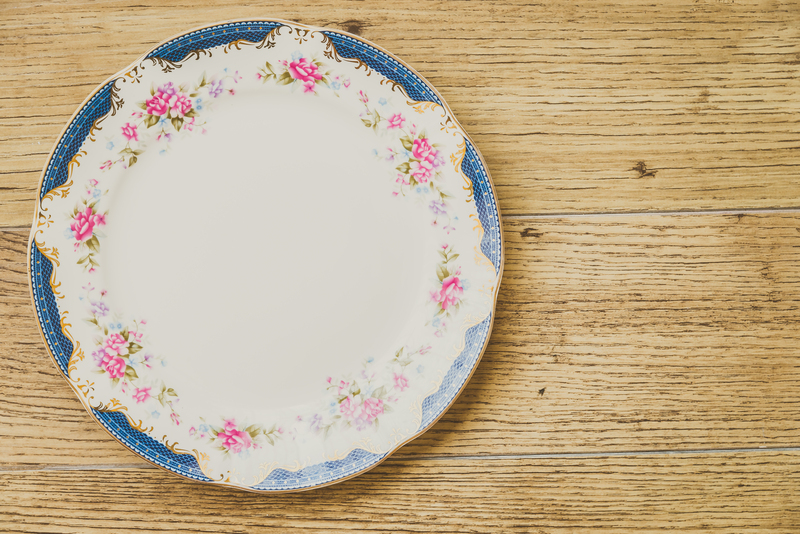Navigating Plastic Hazards: What to Avoid for Wellness
Plastic is everywhere--found in packaging, household products, toys, and even personal care items. While plastic offers undeniable convenience, mounting research reveals that certain types and uses of plastics can present significant risks to our health and the environment. Navigating the world of plastic hazards has become essential for anyone keen on maintaining overall wellness. In this comprehensive guide, we'll shed light on hazardous plastics, decoding what to avoid, and providing actionable tips for a healthier lifestyle.

Understanding Plastics and Their Impact on Wellness
Before addressing which plastics to avoid, it's vital to grasp what plastics are and why they pose health concerns. Plastics are synthetic polymers--long chains of molecules widely used due to their versatility, durability, and affordability. However,
Why Should You Be Concerned About Plastic Hazards?
From microplastics in drinking water to the infamous BPA in food packaging, daily exposure to certain plastics can increase toxic buildup in our bodies. Scientific studies have linked specific plastic chemicals to:
- Endocrine system disruption (hormonal imbalances)
- Increased risk of cancers and metabolic disorders
- Developmental delays in children
- Fertility issues in both men and women
- Immune system suppression
Navigating plastic hazards is not just about avoiding visible plastic items--it also involves understanding hidden exposure and making informed choices.
Identifying the Most Harmful Plastics: What to Avoid
Many plastics are categorized by Resin Identification Codes (typically numbers 1 through 7) found in the recycling triangle imprinted on products. Some of these plastics are considered safer, while others pose health threats. Here's what you need to know:
#1 PET or PETE (Polyethylene Terephthalate)
Although PET is widely used for water bottles and food packaging, it can leach antimony, especially when exposed to heat for an extended time. While deemed generally safe for single use, avoid reusing PET bottles to minimize exposure risks.
#2 HDPE (High-Density Polyethylene)
HDPE is used for milk jugs, detergent bottles, and some plastic bags. It is considered one of the safer plastics, but extended reuse and exposure to sunlight can still cause leaching of chemicals.
#3 PVC (Polyvinyl Chloride): A Key Plastic Hazard to Avoid
- Found in: Pipes, shower curtains, clear food packaging, and toys
- Hazards: Contains phthalates and vinyl chloride; linked to hormonal disruption, respiratory issues, and even cancer.
#4 LDPE (Low-Density Polyethylene)
Used in bread bags, frozen food bags, and some squeezable bottles. LDPE is generally safer, but it's still best to avoid using it with fatty foods or microwave heating, as heat can cause chemical migration.
#5 PP (Polypropylene)
Common in yogurt containers, bottle caps, and straws. PP is relatively stable and considered safer for food use. Tip: Use this as a preferred choice when plastic is necessary.
#6 PS (Polystyrene): What to Steer Clear Of
- Found in: Disposable coffee cups, takeout containers, egg cartons
- Hazards: Leaches styrene, a possible human carcinogen. Not safe for hot or oily foods.
Avoid using polystyrene products where there is any chance of contact with heat or acidic substances.
#7 Other (Plastics including Polycarbonate, BPA): The Mixed Bag
- Found in: Sports water bottles, baby bottles, food storage containers
- Hazards: Contains BPA (bisphenol-A) or BPS (bisphenol-S), associated with hormonal imbalances, decreased fertility, and neurodevelopmental disorders.
Common Sources of Hazardous Plastics in Daily Life
To effectively navigate plastic hazards, it's important to know where the greatest risks lurk in your routine:
- Plastic food and drink containers: Especially those used with hot liquids or microwaved foods
- Plastic wrap and packaging: Used with fatty, acidic, or hot foods increases leaching risks
- Toiletries and cosmetics: Microbeads in exfoliants and glitters enter water systems and your body
- Children's toys: Cheap, soft plastic toys made from PVC often contain phthalates
- Household goods: Shower curtains, vinyl flooring, and garden hoses may emit harmful fumes
Plastics to Absolutely Avoid for Wellness
- Single-use water bottles--especially if reused or exposed to heat
- Plastic cookware and utensils--switch to stainless steel, glass, or silicone
- Plastic baby bottles and sippy cups--opt for glass or BPA/BPS-free tested alternatives
- Plastic food wrap--replace with beeswax wraps or reusable silicone lids
- Vinyl toys and teething rings--choose wood or food-grade silicone instead
Strategies for Navigating Plastic Hazards at Home
With knowledge comes the power to minimize risks. Here are practical steps to avoid hazardous plastics and safeguard your wellness:
Upgrade Your Food and Drink Storage
- Switch to glass, ceramic, or high-quality stainless steel containers for storing food and beverages
- Avoid microwaving food in plastic containers--use glass or porcelain instead
- Cover foods with a plate or cloth rather than plastic wrap when reheating
Reduce Single-Use Plastics
- Carry a reusable water bottle made from stainless steel or glass
- Bring your own shopping bags and avoid plastic produce bags
- Opt for bulk items using your own storage solutions to reduce packaging waste
Read Labels for Hidden Plastics
- Scan ingredient lists for terms like polyethylene, polypropylene, or nylon in cosmetics and personal care products
- Choose clothing and textiles made with natural fibers instead of synthetic microplastic-shedding fabrics
Create a Child-Safe Environment
- Select non-plastic toys, or those certified BPA, phthalate, and PVC-free
- Use glass baby bottles and silicone nipples
- Check school supplies for PVC-free guarantees
Understanding Labels and Claims: What to Trust?
Marketing terms like 'BPA-free' or 'eco-friendly' can be confusing. Here's what you need to know:
- BPA-Free: While these plastics do not contain bisphenol-A, they may still use similar compounds like BPS or BPF, which could also pose hazards.
- Compostable or Biodegradable Plastics: These only break down under specific industrial conditions and may still leach chemicals under typical use.
- Food Safe/Safe for Children: Look for independent third-party certifications rather than just manufacturer's claims.
How to Properly Dispose of Plastic for Environmental Wellness
Proper disposal minimizes plastic pollution, protecting both the environment and your health:
- Recycle correctly: Rinse and sort plastics as per local guidelines--recyclables differ by region
- Avoid "wishcycling": Placing non-recyclables in recycling bin contaminates entire batches
- Encourage take-back programs: Participate in retailer initiatives for recycling electronics, bags, or batteries, reducing hazardous landfill waste
Emerging Concerns: Microplastics and Nanoplastics
Recent attention has focused on the tiny plastic particles, microplastics and nanoplastics, found in bottled water, table salt, seafood, and even air. These particles can carry toxic chemicals, enter the food chain, and accumulate in human tissues, with yet-unknown long-term effects.
- Minimize processed foods: Processed foods are a major source of microplastic contamination
- Filter drinking water: Use a high-quality filter tested for microplastic removal
- Avoid synthetic textiles: Choose natural fiber clothing and use a microfiber filter with your washing machine

Key Takeaways: A Wellness-Centered Approach to Plastics
- Prioritize avoidance of the most hazardous plastics--PVC (#3), polystyrene (#6), and polycarbonate (#7, BPA/BPS)
- Choose alternatives such as glass, stainless steel, silicone, or biodegradable materials when possible
- Limit exposure to all plastics with food heat or acidity
- Educate yourself and family regularly about new research and product guidelines
Remember: Navigating plastic hazards is not about eliminating all plastics, but about informed choices that support long-term wellness.
Building a Healthier Future: Reducing Plastic Hazards for All
As awareness grows, more resources and alternatives become available for those wishing to avoid the dangers of plastic use. By advocating for better regulations, supporting ethical companies, and educating others, we can collectively foster a safer environment and a healthier future for ourselves and generations to come.
Start your journey today:
- Avoid hazardous plastic types and products whenever possible
- Share your knowledge about navigating plastic hazards with friends and family
- Push for transparent labeling and safer alternatives
The path to wellness is paved with informed, conscious decisions. The more you know about what to avoid, the better you can protect yourself from plastic hazards--and enjoy a life of optimal well-being.






